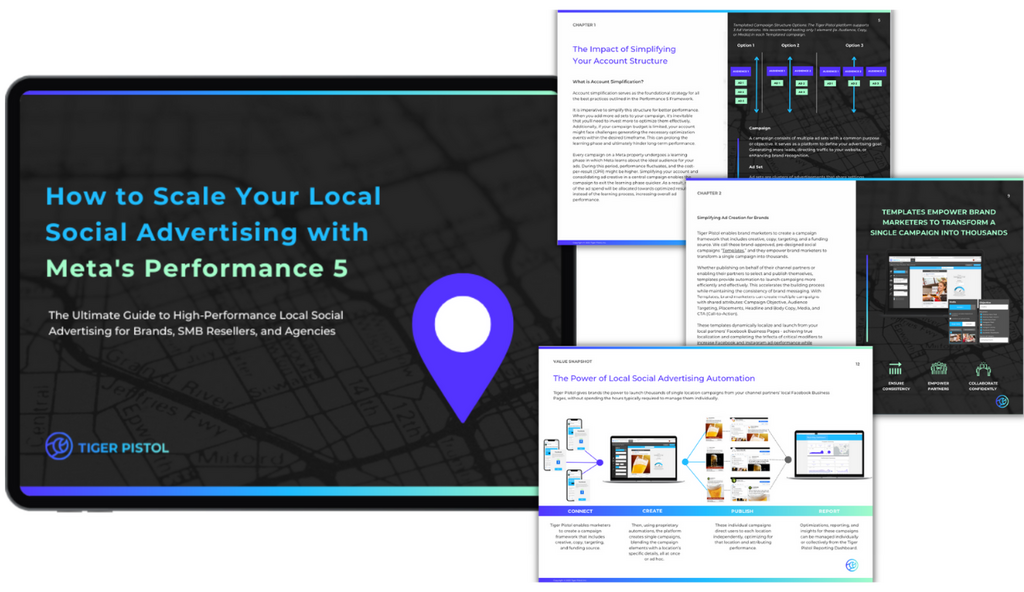How to Scale Your Local Social Media Advertising with the Meta Performance 5
Get the Meta Performance 5 Playbook
"*" indicates required fields
Meta recently revealed some incredible enhancements to their Performance 5 best practices. These updates are specifically designed to help advertisers make the most of Meta’s advanced AI, Reels, and new ad formats. The Performance 5 Framework for Growth comprises five game-changing best practices that supercharge advertisers’ performance when leveraging Meta’s ad products.

What’s Inside the Playbook?
How to Scale Your Local Social Advertising with Meta’s Performance 5 aims to inform marketers of the major updates to Meta’s Performance 5 Framework, educate them on the implications of the updates for their advertising, and empower them to determine how to implement the updates accordingly.
- Understand Meta’s latest updates to the Performance 5 Framework
- Determine how these updates impact your advertising strategies
- Formulate actionable steps to leverage Meta’s advanced AI, Reels, and new ad formats
- Learn how Tiger Pistol’s solution perfectly aligns with Meta’s best practices.
Download the Playbook
Learn how to effectively Implement the Meta Performance 5 Framework for Growth at Scale across your social media advertising strategy. Extract the full potential from Meta’s Performance 5 framework.
Get the playbook by filling out the form at the top of the page.
Discover how Tiger Pistol can power your local advertising success

Learn More About Local Advertising
If They Post a Lot, Why Do My Franchisees Need Paid Social Advertising Too?
With an astonishing three billion monthly active users, Facebook is the unrivaled social media powerhouse. For fr


